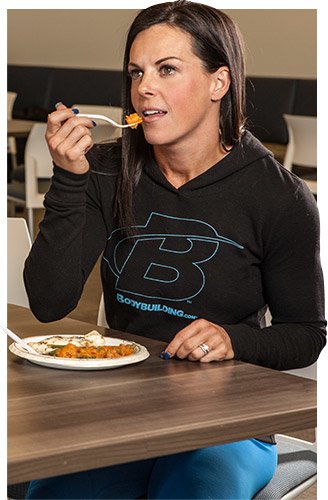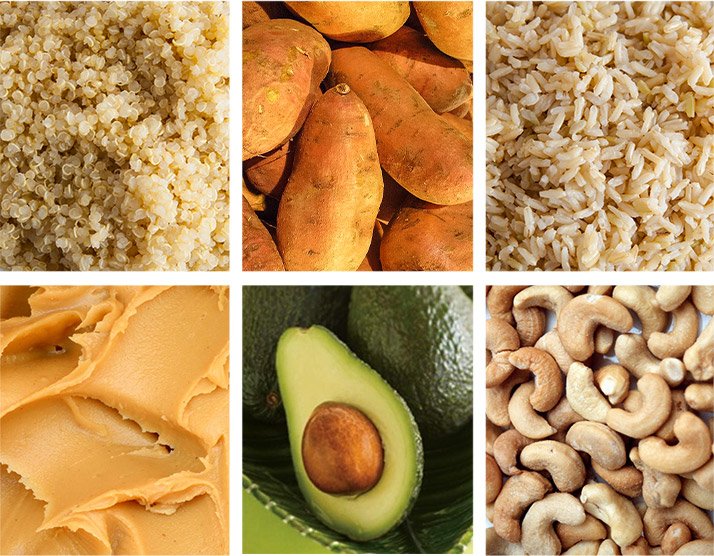
The Smart Way To Build A Fat-Loss Diet
Smart fat loss isn't about seeing what you can survive. Crash dieting is a recipe for burnout, metabolic adaptation, and even fat gain. Layne Norton and Sohee Lee have a better way to earn results that last!
The wait is over! In our last article, "How Your Fat-Loss Diet Could Be Making You Fat," we laid out the problems with the age-old "eat less and exercise more" mantra of fat loss. The more strictly you diet, and the more times you try to diet, the more efficient your metabolism becomes. This sounds encouraging at first, but it's actually pretty grim. It means our bodies burn fewer calories for any given activity. This is great for survival purposes, but not for those of us who are intentionally attempting to shed body fat.
Further complicating things, your hunger level often increases during weight loss, satiety decreases, and the body desperately tries to shove you back up to your body-fat set point. This point, you may recall, is your body's customary level of body fat. While you may think that hard training and strict dieting would inevitably push that point down, the popular yo-yo-diet model can actually push it up—meaning your body is trying to get fatter, not leaner.
When this happens—when, despite low calories, consistent workouts, and an overall diligent fitness program, forward progress of any kind is nowhere to be seen—the body is said to be "metabolically adapted."
But not all hope is lost! As promised, here is how you can lower your body-fat set point, conquer metabolic adaptation, and find a fat-loss approach that lasts.
Solution 1 Start your diet on the right foot
Preventing metabolic adaptation starts with setting up an appropriate diet in the first place. This starts with a single idea that you need to take to heart: Diet on as many calories as you can get away with while still making progress.
Less is not better; sustainable progress is better. For everybody, that is going to be a different number, and if you're accustomed to the "diet on as few calories as possible" approach, it will probably take you some time and struggles to find yours.

If you've been restricting food but not counting calories—this is more common than you might think—then our first recommendation is to perform an honest audit of your current intake. Spend the next three days tracking your daily macronutrients—that is, number of grams of protein, carbs, and fats—and establish a caloric baseline. You can use the old pen-and-paper method, or utilize any of the popular nutrition-tracking apps like MyMacros+ or MyFitnessPal. More importantly, don't change yet. Do your best to be as honest as possible about what and how much you truly eat.
Once you've got that number, it's time to tweak it. Most people will find that dieting on a bodyweight multiplier of 12 for total calories is a good starting point. In other words, take your body weight in pounds and multiply that by 12 to determine your total intake for the day. So if you weigh 150 pounds, then 1,800 calories per day will be your goal for fat loss. If you started far lower than bodyweight-times-12 in the past, that could be precisely what led you down the road to adaptation.
Calorie Calculator
Bear in mind that this is just your starting point, because everyone is unique. You may find after a few weeks that bodyweight-times-12 is too low, you feel lethargic, and your workout quality is suffering. On the other hand, you may discover after a few weeks that you need to drop your calories even lower than that. But the important part is that now you have a reasonable point from which to proceed systematically.
The larger takeaway is this: Don't be afraid to take things slow. While it may be more tempting to slash calories left and right and go from 0-60 in the gym, utilizing the extreme approach is unsustainable and will eventually lead to burnout, both physiologically and psychologically. Burnout leads to binge-style rebounds, and that, as we discussed in the previous article, can actually succeed in raising your body-fat set point.
Solution 2 Add calories back in, but slowly

So you're systematically working your calories downward and seeing results. What next? Should you stay down there forever? Definitely not. Should you unhinge your jaw and Garfield your way through the nearest buffet? Not this time.
Consider approaching your diet like powerlifters approach peaking for a meet. If they know they can deadlift 700 for one rep, they don't just hit that one rep over and over for every future workout. They touch it briefly and occasionally, then systematically work their way back down to a level where they can rack up plenty of quality reps. Truly strong people know that those easier reps are the ones that make the hard ones possible.
The dieting equivalent of this approach is the reverse diet. Reverse dieting is a method by which an individual methodically raises his or her calorie intake in order to bring a suppressed metabolism back up to speed, but without piling on excess body fat. This is ideal for those who would prefer not to have to hide in offseason sweatpants. Sohee discusses this further in her article, "4 Reasons Your Best Diet Might Be a Reverse Diet."
Admittedly, there is currently no definitive research on reverse dieting. However, we're confident that will change. Based on our observations from working with hundreds of clients—and ourselves—we're convinced that raising calories slowly reduces fat accumulation in the long term.
How Slow Should I Go?
The rate at which you choose to increase your calories in a reverse diet is highly dependent on you—your history, your comfort level, your goals, and your recent experiences. This point can't be emphasized enough.
You may be wondering, "Can't I just go back up to maintenance calories when I'm done dieting?" Here's the problem: If maintenance calories were truly maintenance, you would by definition not gain weight. But in reality, metabolism is highly variable. What may have been your maintenance calories one month ago might have since changed. For this reason, we don't recommend being so quick to spike your intake.
When considering how slowly or quickly to increase your caloric intake, ask yourself the following questions:
- How low did my caloric intake drop?
- What was my bodyweight multiplier by the end of the diet?
- How do I feel at this current intake?
- How much potential body-fat gain am I comfortable with?
The lower your calories, the crummier you feel, and the more lenient you are with a little extra cushion, the more aggressive you may want to be with your calorie bumps. Otherwise, if you'd prefer to take it slow and be a little more cautious, take the more conservative route.
What does this mean in action? Some people are just fine bumping up their carbohydrate and fat intake by 2-10 percent per week, while others benefit from a more aggressive rate. If you were in a steep caloric deficit at the conclusion of the diet, tossing in 200-500 calories right off the bat may be necessary.
Keep in mind that a reverse diet isn't supposed to feel "slightly less awful." Do it right, and you should actually feel good, both physically and mentally. Wouldn't that be a nice change?

Solution 3 Find small changes to boost adherence
Hopefully we've convinced you by now that the "on my diet/off my diet" dance is dooming your results. Adherence is how lasting results get achieved. And if you find that your dietary adherence has not been on point, consider shaking up your target macronutrient numbers.
For example, if you are consistently overshooting your carbohydrate intake because you find yourself feeling particularly depleted, why not simply bump up your target carbohydrate number? Rather than fight an uphill battle and try to force yourself to stick to a lower intake that leaves you feeling like dirt, look for ways to build confidence and momentum by increasing your adherence.
Remember, this isn't supposed to be punishment! The more adherent you are, the more encouraged you will feel. And the more encouraged you feel, the more you'll enjoy the journey. And at the end of the day, it's crucial to fall in love with the process.
No matter how hard any of us might try, we can't separate physiology from psychology. The two go hand in hand, and it would be irresponsible to ignore one side of the equation. Treat yourself right along the way, and you'll earn better results and appreciate them more!


